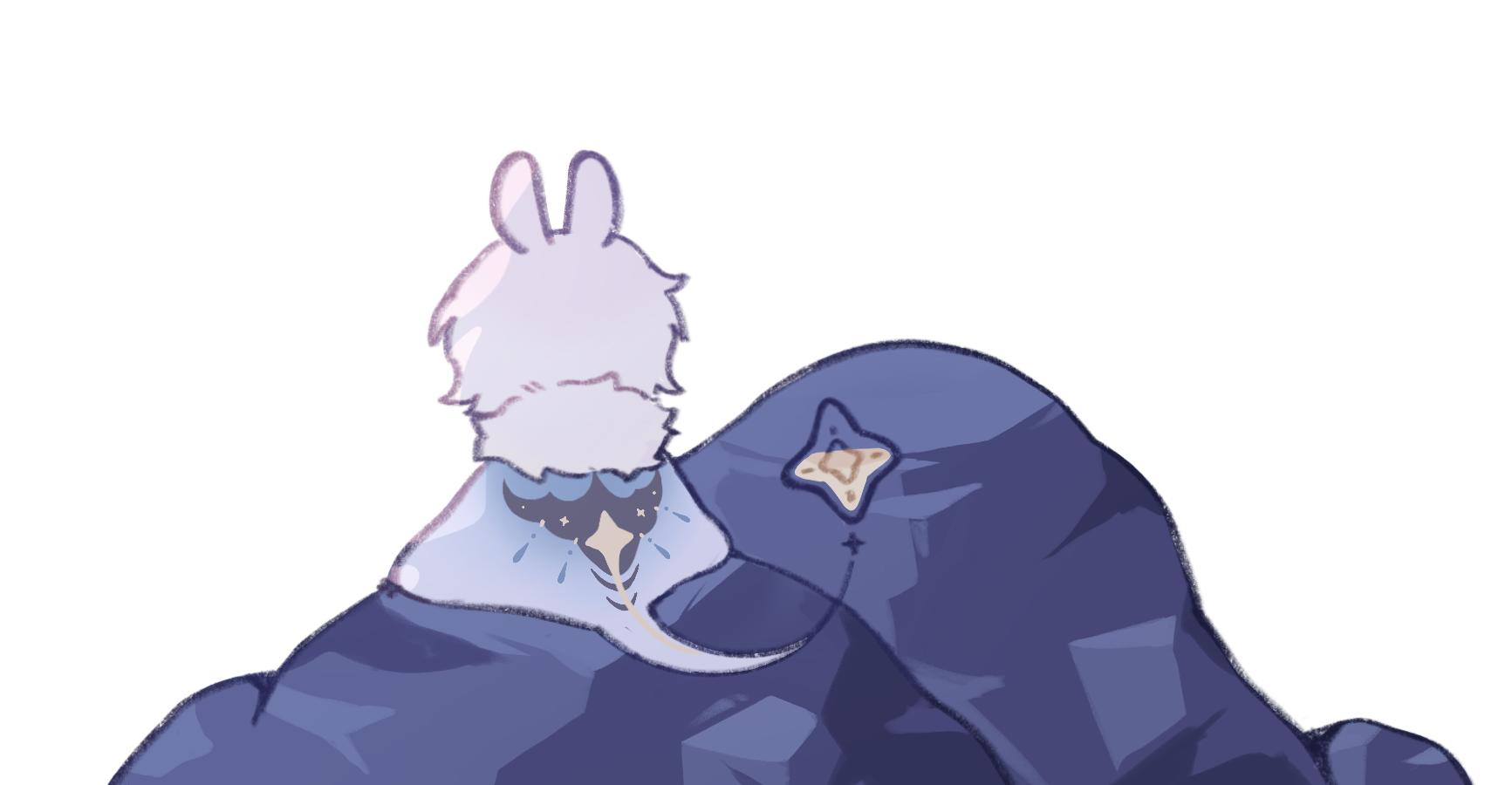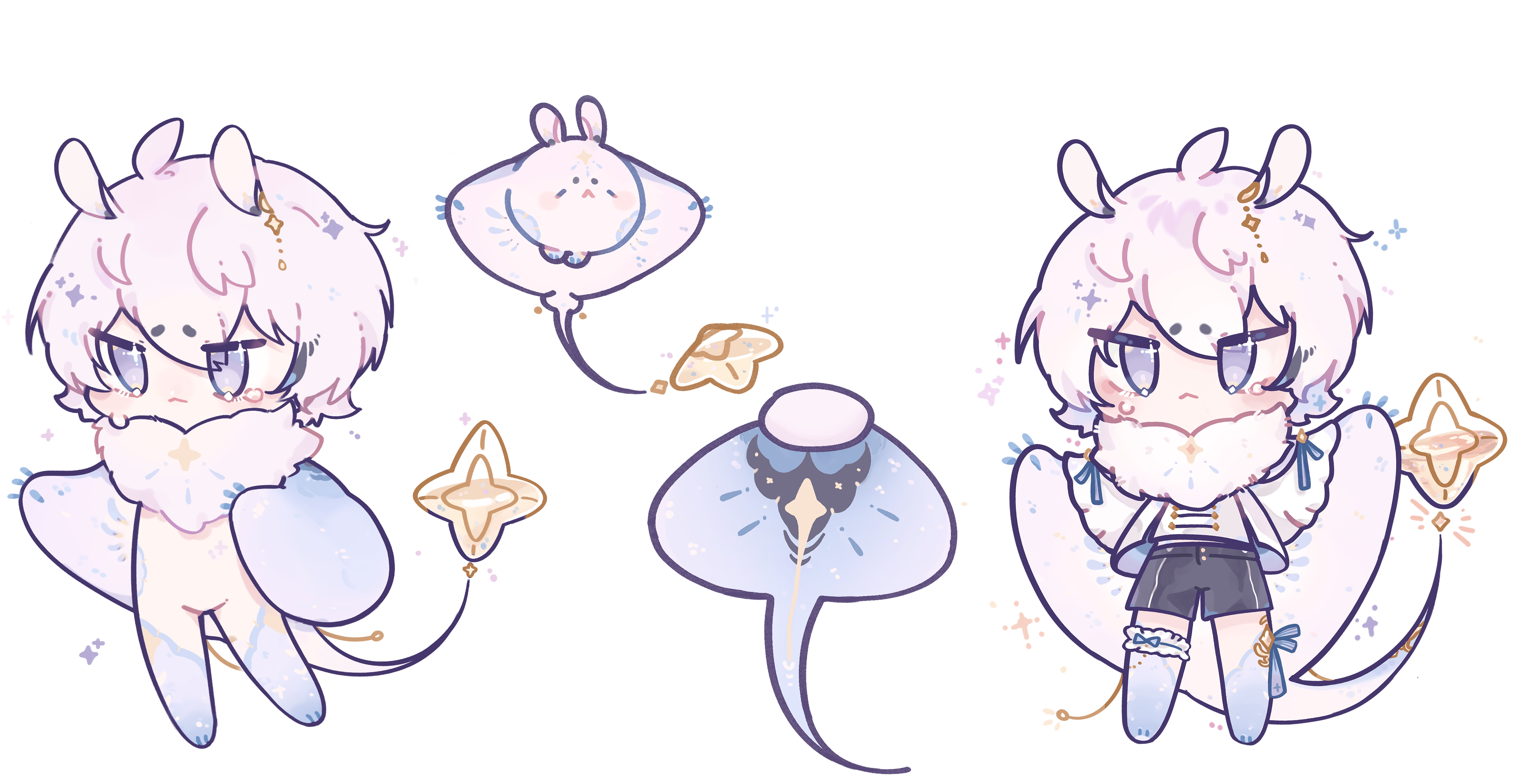"Life emerges from the depths of the ocean...
What are Phosray ?
Phosrays, also known as 'Phos-ray,' are tiny marine creatures inhabiting the ocean. With their small size, they are full of charm. While they share similarities with other common sea creatures, their adorable appearance sets them apart, making them highly sought after by people..
General characteristicsPhosrays possess two distinct body forms: commonly referred to as the "Drifted Form" and the "Bloom Form." Phosrays feature unique attributes, including ray-like ears situated above their heads, wing-like ray extensions attached to their arms, and a tail with a water-filled glass tip. This tail element holds immense significance for them, akin to a life-sustaining component. Drifted Form The "Drifted Form" Phosrays are minuscule, measuring approximately 2-3 cm in size. They sport a spherical body shape adorned with ray-like wings extending from their backs, and they possess a set of petite legs. These Phosrays predominantly occupy the sea surface during daylight hours. Phosray need to absorb sunlight regularly and can only do so while in their Drifted Form. They convert the absorbed sunlight into energy to fuel their transformation into the "Bloom Form." Bloom Form This transformation is driven by the accumulation of solar energy gathered throughout the day. Phosray can stay in this from 3-5 days, the length of their transformation depends on how much sunlight they absorbed. Staying in Bloom Form for 5 days would need a full day (sunrise to sunset) of absorbing sunlight in their Drifted Form. In their Bloom Form, Phosrays take on an appearance akin to miniature human beings, measuring approximately 9-10 cm in height. This form features ray wings affixed to their arms, enabling them to walk and run on land. However, extended periods spent on land can lead to dry skin, and they face the potential danger of being captured by humans. To avoid these risks, the majority of Phosrays primarily reside in aquatic environments. |
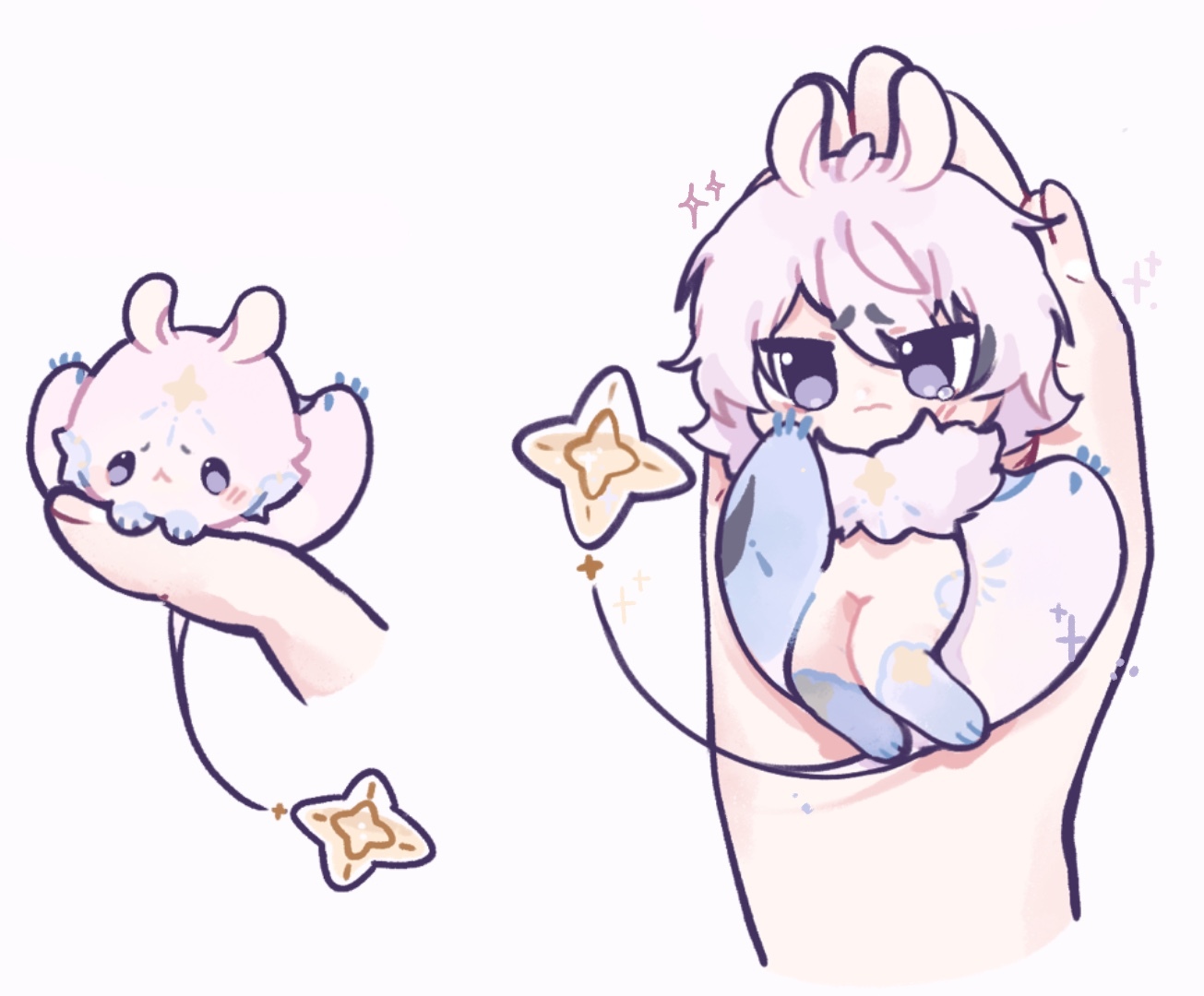 |
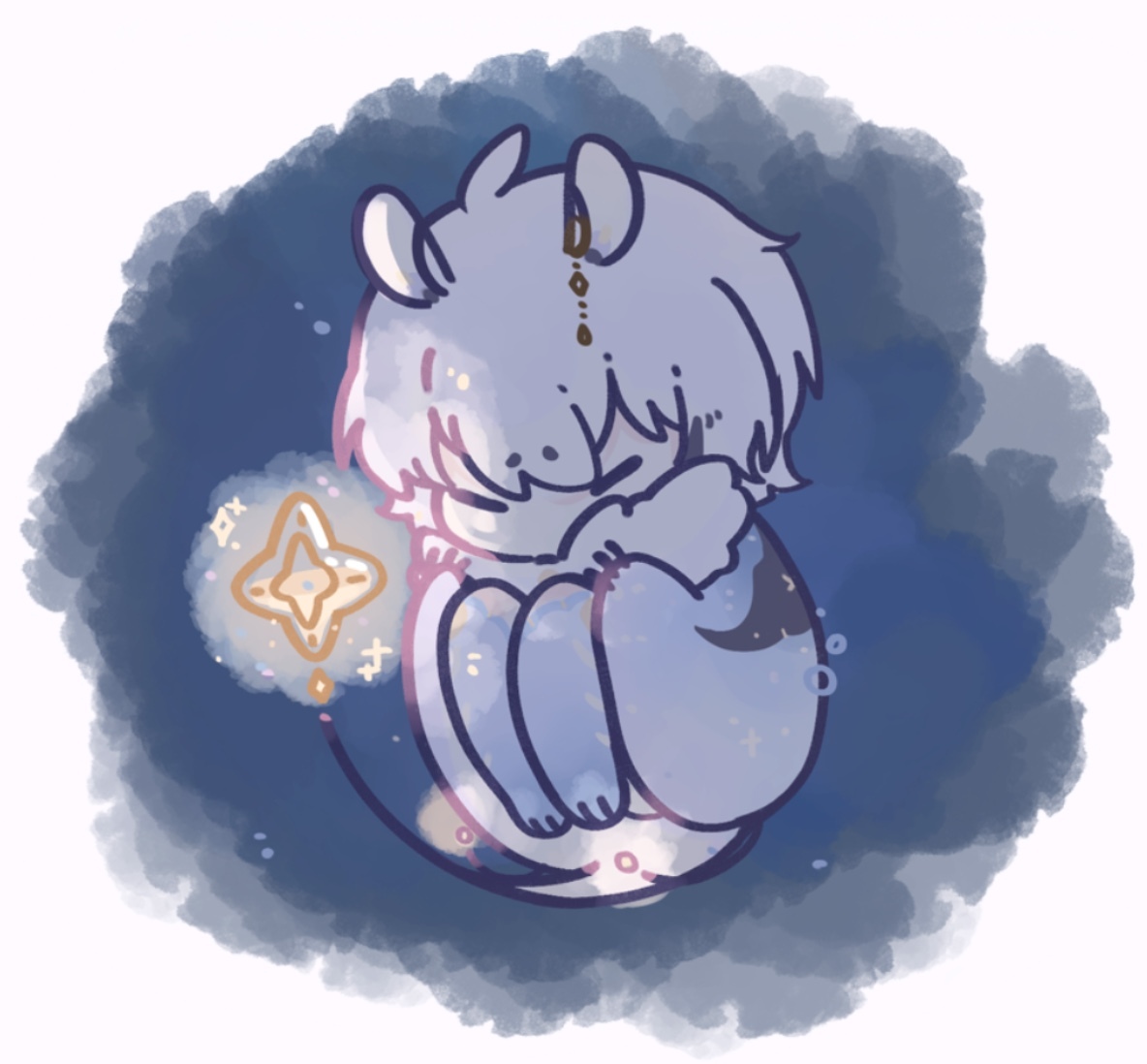 |
The water stored at the tail's tip emits a luminous glow similar to bioluminescent plankton. Despite lacking internal organs or a digestive system, Phosrays possess nerves that grant them awareness of weather conditions and the capacity to experience pain.Phosrays are a species equipped with a cerebrum, allowing them to sense emotions, feelings, and individual personalities. Their cognitive capabilities are not highly intricate, akin to children aged around 9-14 years old. While they can be taught, their habits vary among individuals. |
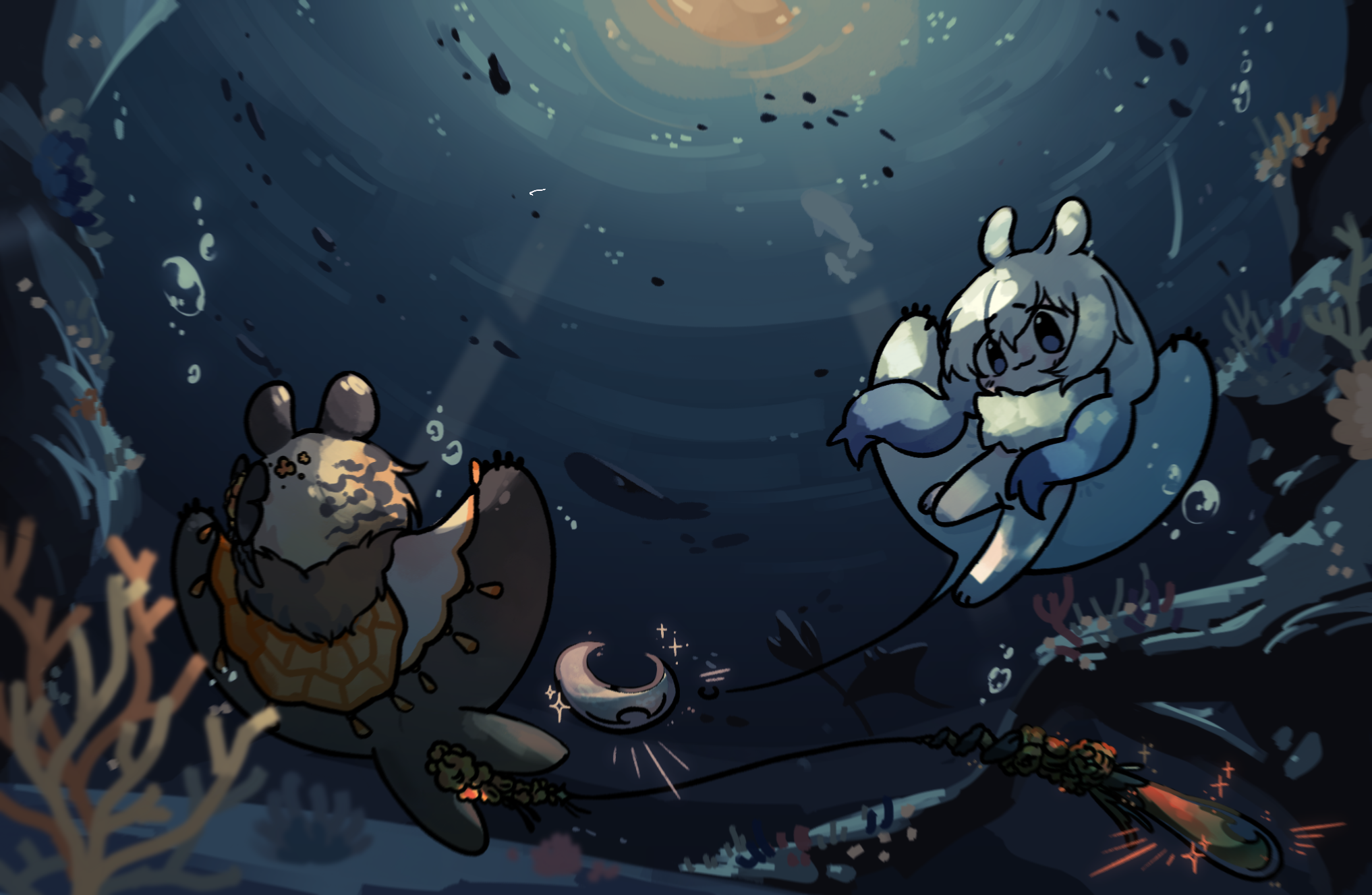
Phosray’s living
Phosrays exhibit a semi-aquatic nature, inhabiting both terrestrial and aquatic environments. However, prolonged periods spent on land result in dehydration and have detrimental effects on their overall well-being. Consequently, Phosrays primarily reside in water to maintain their health. They are far from ordinary creatures, as their varied origins have given rise to wholly distinct lifestyles.
Phosrays are recognized as marine organisms with similarities to bioluminescent plankton. While their bodies comprise multiple cells and structures, they eschew conventional nourishment and instead harness sunlight for sustenance. This distinctive feeding behavior, reliant solely on sunlight, indicates their absence of internal organs.
Throughout the ocean, there are special glowing plankton. These plankton play a special part in creating new Phosray when mixed with Determination. However, sometimes souls of fish that Stelciar haven’t guided yet crash into a glowing plankton bloom. This creates a extremely rare type of fish, the constellation fish!
Constellation fish, are extremely rare and provide a special healing ability for phosray. When phosray stay near constellation fish it makes their phosray tail glow brighter and their tail water last longer.
All Phosray are born with tail's full of water. Each Phosray has a different lifespan according to how much water their tail can hold. As they age the water slowly decreases each year, if the water runs out completely, or the glass of their tail is broken the Phosray will pass away. Void's enjoy consuming Phosray tail water, and are the natural enemy of Phosray.
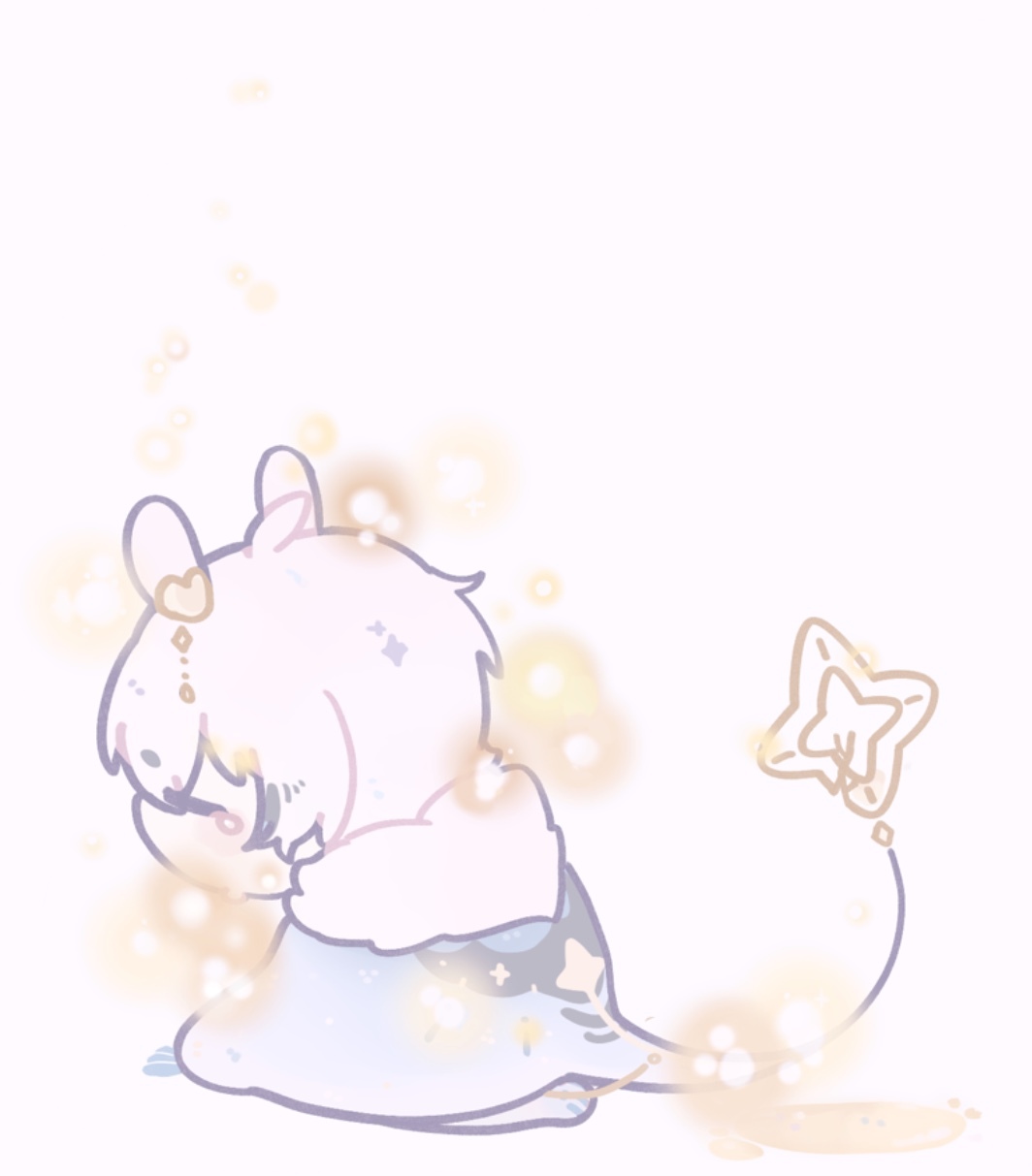 |
 |
| The water contained within the glass at the tail's end originates from the seawater present at the time of the Phosrays' birth. In the event that the glass shatters, causing the water to evaporate, or if the Phosrays do not receive an adequate amount of sunlight, their bodies revert to a form of light mist. This transformation signifies their departure from the world, effectively ending their existence. | Consequently, Phosrays are primarily located within the Sunlight zone of the ocean, which spans from 1 to 100 meters below the surface. While there might be instances of individuals straying from the groups and venturing into the Twilight zone (200 meters from the surface), Phosrays would not be found in the Midnight zone (1000 meters from the surface) due to the inhospitable conditions at that depth.Throughout daylight hours, Phosrays exhibit a tendency to congregate in sizable clusters, drifting together with the currents near the water's surface. This grouping behavior serves as a protective measure against potential predators. |
 |
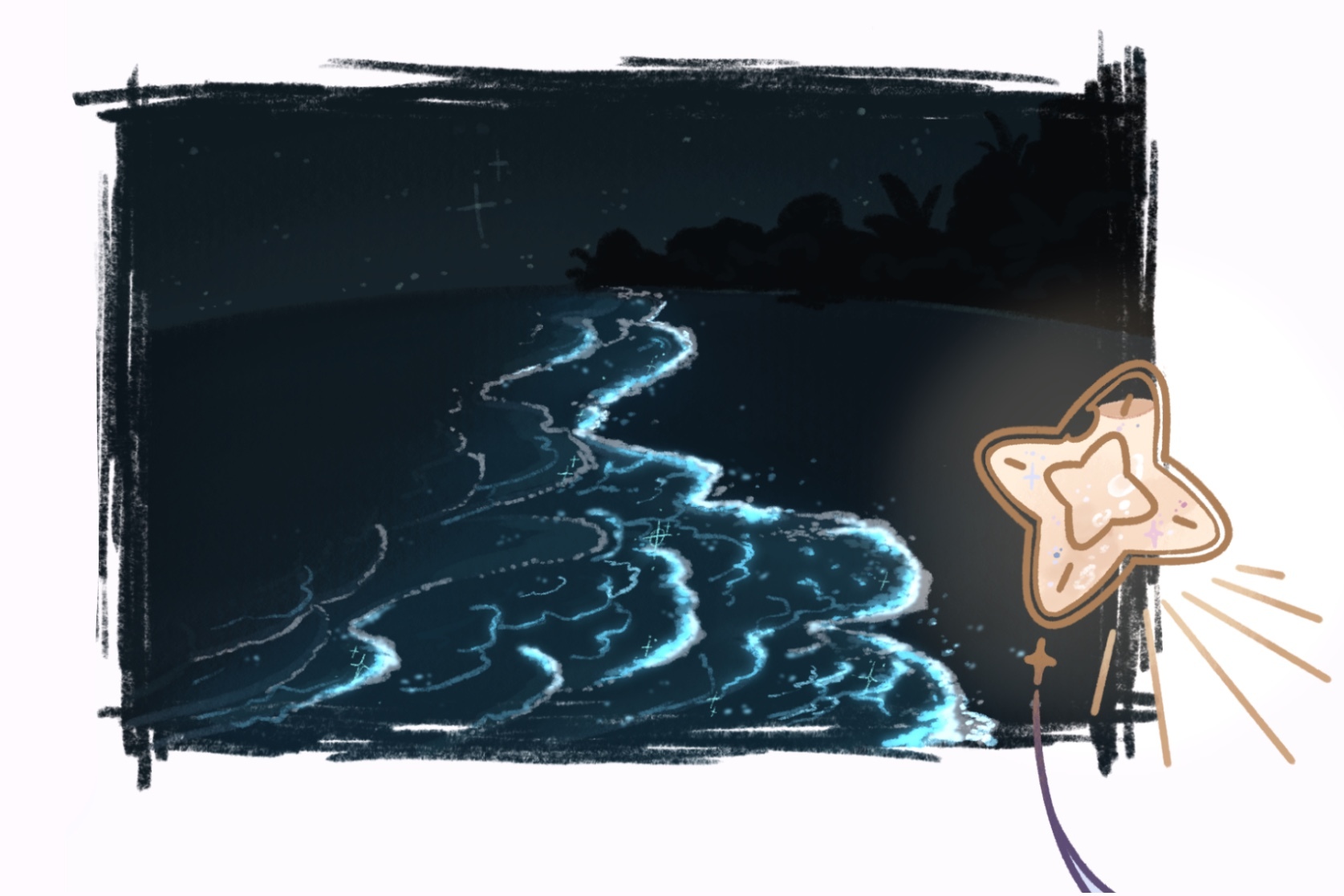 |
| Due to their diminutive size, Phosrays occupy the lowest tier of the food chain. They frequently fall prey to other animals, including humans who capture them to create amulets, believing that the luminous glow they possess imparts a touch of enchantment or protective energy. These amulets are often seen as tokens of luck, safeguarding, or simply as captivating adornments. Somes Humans also keep them in enclosures as decorative specimens. | Phosrays do not typically undergo traditional reproduction. Their birth is an extraordinary event that occurs through the fusion of plankton with the Determination of a soul, which is placed atop the water's surface by a Stelciar in the sea. |
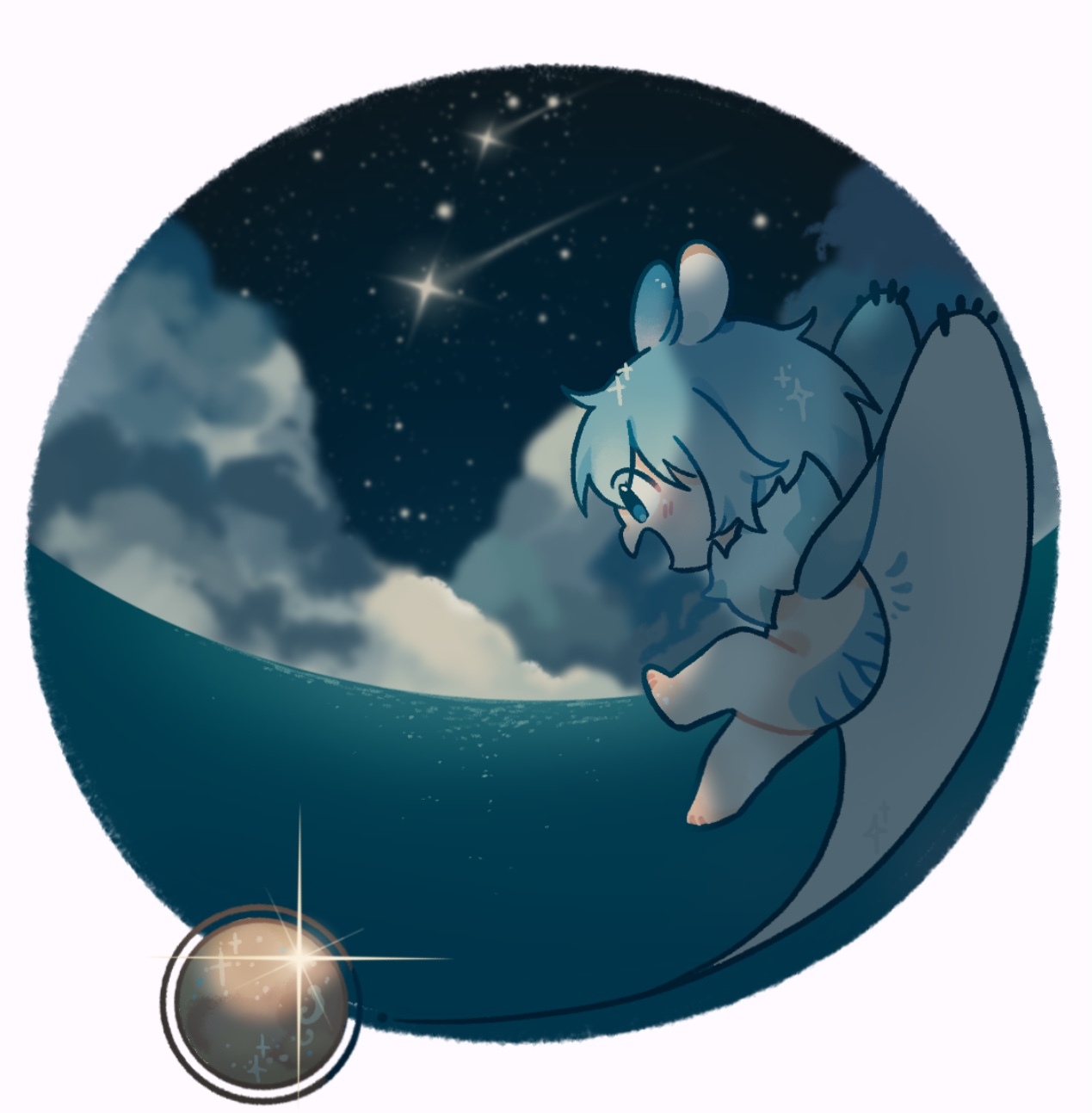 |
While primarily aquatic creatures, Phosrays demonstrate an intriguing ability to thrive on land. Despite the inherent challenges and risks, certain adventurous Phosrays choose to embrace the unfamiliar terrain. Motivated by curiosity and an innate mischievous streak, these individuals seek to engage with life beyond the water's edge, driven by instincts that resist restraint.Among their unique attributes is a profound fondness for soaring through the skies. This airborne activity brings them immense joy and liberation. Phosrays derive great pleasure from leaping into the air from the sea's surface and executing graceful glides over the water. These brief, exhilarating flights, where their bodies catch the wind's embrace, evoke a sensation akin to swimming through the heavens.Remarkably, their ray-like wings, originally evolved for swift aquatic propulsion, serve a dual purpose. Not only do these wings enable them to navigate underwater currents with agility, but they also facilitate wind-assisted gliding when airborne. This skill empowers them to surf on air currents, experiencing the exhilaration of flight, a feat that parallels their affinity for aquatic movement. |
 |
Story behind the birth of PhosrayScientifically, the quest to unravel the origins of Phosrays has led to increasing mystification. The more in-depth the studies, the more intricate the puzzle becomes. Frustratingly, it remains impossible to definitively discern how Phosrays come into existence. Observations conducted in marine settings have revealed that newborn Phosrays seem to emerge alongside gatherings of plankton, yet the true mechanism behind this phenomenon remains elusive. However, an intriguing belief has taken root among sailors and coastal inhabitants—that Phosrays are born from the essence of 'Determination'.According to this belief, when any earthly entity reaches the end of its lifespan, its spirit returns to the place from which all things originated: the depths of the boundless ocean. "They have returned their bodies to the earth. Return the soul to the sea. The only thing that remains from the departed is 'Determination'," echoes a tale recounted by an elderly mariner.Determination, touted as the final vestige of hope, emerges as a force stronger than the soul itself. Although shapeless, colorless, and odorless, Determination is believed to descend alongside departing spirits, tracing a path towards the ocean's abyss. Its denser nature, compared to the soul, leads Determination to plunge into the waters, where it becomes entwined with the currents. Upon encountering plankton, aglow with the fervor of life, the Determination of the departed unites with the plankton swarm, birthing a fresh existence, a new identity, and a unique spirit known as the enigmatic 'Phosray'.This profound belief offers insights into the distinctive forms, traits, and characters of Phosrays. Unlike conventional animals that transmit these attributes via DNA, Phosrays inherit them based on the 'Determination' of their origins. This peculiarity accounts for the diverse array of tail glass shapes among Phosrays, which mirror flowers, rocks, and even bear a festive semblance, despite the creatures lacking a direct understanding of these shapes. As a result, this theory gains persuasive power, even though scientists continue to grapple with its astonishing implications. |
 |
Determination of the Birds - Story exampleOnce upon a time, on a cliff where dawn's light emerged, two birds nested side by side. One was a sturdy brown bird resembling tree bark, and the other a little blue bird, as vibrant as the sea. Their shared dream was to touch the moon and stars. As their wings grew strong, they took flight into the vast sky together.Days turned into nights, and they weathered rain, wind, and predators as inseparable companions. Over time, the brown bird's wings weakened, leading it to doubt its dream. Yet the blue bird's determination remained unyielding. It believed in reaching the moon and persistently soared, undeterred even by lost feathers.Despite fading strength, the brown bird couldn't let its friend fly alone. Its resolute companionship reignited a spark. It spread its wings once more, ascending in the twilight glow, embracing a bittersweet truth. The sun's descent mirrored acceptance, but it stayed by its friend's side.In the chill of night, the bluebird acknowledged a harsh reality – its small wings couldn't carry it to the skies. Tear-filled eyes faced the truth that dreams often remain ethereal. In its final moments, it lamented its own naïveté, realizing it led its friend astray.Meanwhile, the brown bird smiled, thankful for the moon it gained through friendship. Even in despair, its friend remained a guiding light. As they plummeted into the ocean, brown and blue merged, with only 'Determination' remaining – a symbol of eternal support, shining like 'moonlight and starlight' that will shine for each other for eternity. |
